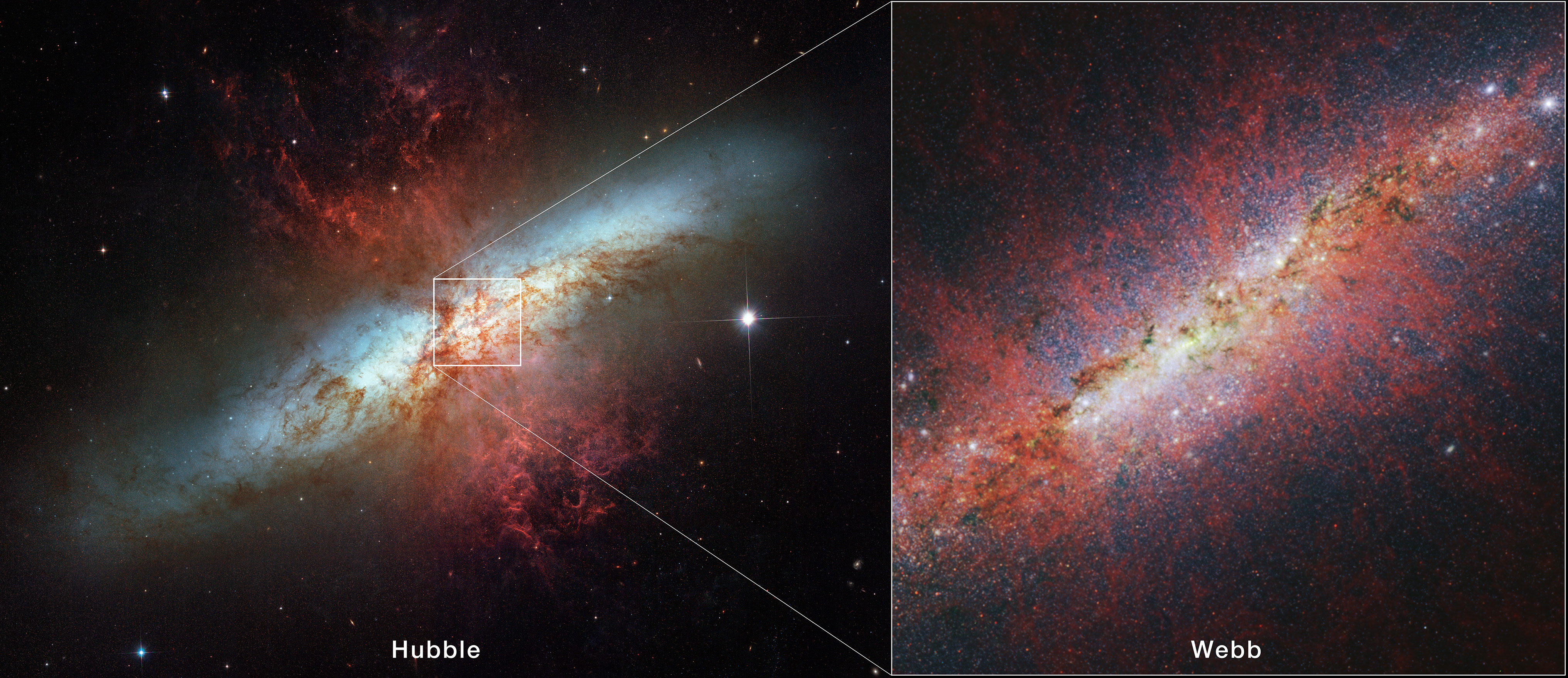
Amid a site teeming with new and young stars lies an intricate substructure.
A team of astronomers used NASA’s James Webb Space Telescope to study the starburst galaxy Messier 82 (M82). Situated 12 million light-years away in the Ursa Major constellation, this galaxy, though relatively small, is a hub of intense star formation. In comparison, M82 is producing new stars 10 times faster than the Milky Way. Led by Alberto Bolatto at the University of Maryland, College Park, the team focused Webb’s NIRCam (Near-Infrared Camera) on the galaxy's core, gaining insight into the conditions that support star formation. “M82 has been extensively studied over the years as a prime example of a starburst galaxy,” explained Bolatto, the study's lead author. “Both NASA’s Spitzer and Hubble space telescopes have observed it. With Webb’s capabilities, we can delve into this star-forming galaxy and uncover its intricate new features.”
A Vibrant Community of Stars
Star formation continues to maintain a sense of mystery because it is shrouded by curtains of dust and gas, creating an obstacle in observing this process. Fortunately, Webb’s ability to peer in the infrared is an asset in navigating these murky conditions. Additionally, these NIRCam images of the very center of the starburst were obtained using an instrument mode that prevented the very bright source from overwhelming the detector.
While dark brown tendrils of heavy dust are threaded throughout M82’s glowing white core even in this infrared view, Webb’s NIRCam has revealed a level of detail that has historically been obscured. Looking closer toward the center, small specks depicted in green denote concentrated areas of iron, most of which are supernova remnants. Small patches that appear red signify regions where molecular hydrogen is being lit up by a nearby young star’s radiation.
“This image shows the power of Webb,” said Rebecca Levy, second author of the study at the University of Arizona, Tucson. “Every single white dot in this image is either a star or a star cluster. We can start to distinguish all of these tiny point sources, which enables us to acquire an accurate count of all the star clusters in this galaxy.”
Finding Structure in Lively Conditions
Studying M82 in longer infrared wavelengths reveals clumpy tendrils in red extending above and below the galaxy’s plane. These gaseous streamers form a galactic wind emanating from the starburst core. The research team focused on understanding how this wind, driven by rapid star formation and subsequent supernovae, is launched and impacts the surrounding environment. By analyzing a central section of M82, scientists pinpointed the wind's origin and studied the interaction between hot and cold components within it. Webb’s NIRCam instrument effectively traced the galactic wind's structure through emissions from polycyclic aromatic hydrocarbons (PAHs), acting as sooty chemical molecules. Despite expectations, the PAH emission revealed a previously unknown fine structure of the galactic wind, depicted as red filaments extending from the central star-forming region. Surprisingly, the PAH emission showed similarities with that of hot, ionized gas. Bolatto noted, “It was unexpected to see the PAH emission resemble ionized gas. PAHs are not expected to survive long in such a strong radiation field, suggesting they may be continuously replenished. This challenges our theories, indicating further investigation is necessary.”
No comments:
Post a Comment